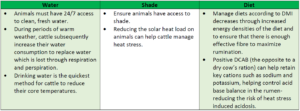Thanks to the favourable grass growing conditions, we have seen an increase in growth across the UK averaging at 57kg DM/ha/day (+19kg DM/ha/day on the previous week). Across the regions, the North East has experienced the highest growth rates of 78kg DM/ha/day which is +31kg DM/ha/day compared to last week. The lowest recorded figures are seen in the South East, at 37kg DM/ha/day (+10 kg DM/ha/day compared to last week). The East and North East saw the biggest change in regional grass growth figures as these regions both saw an increase of 31kg DM/ha/day.
With sunny spells forecasted this week, combined with the flush of grass growth, there is an increased risk for staggers which highlights the importance of supplementing according to risk. It is also important to monitor sward heights to maintain optimal covers and to help minimize the reduction in grass quality and subsequent animal performance. A decrease has been seen this week with regards to potential MYFG, to M+11.27 litres/day (-2.35litres/day compared to last week). Compared to this time last year, this is 6.21 litres/day less but is much closer to the 6-year average of M+13.01 litres/day.
Potential grass DM intake has also seen a reduction this week, average 11.99kg DM/day, vs last week’s 12.64kg DM/day. Estimated ME content (11.38MJ/kg DM) is lower than both this time last year and the 6-year average, resulting in a decrease MYFG. Caution is to be made when interpreting these MYFG figures as 44% of samples received were from Wales and the West, and another 22% was from the North West. The East and Wales (and West) saw the highest MYFG figure at M+11.5 litres/day, whilst a figure of M+5.0 litres/day was seen in Scotland.
Over the last week, the temperature-humidity index (THI) indicates there has been a mild risk of heat stress; THI has increased to a rounded 70, 2 points away from the high-risk threshold. For the coming week, the sunny spells forecasted increases the risk of heat stress. Heat stress has multiple impacts on livestock, reducing DMI, decreasing milk production by up to 15% (whilst causing butterfats to reduce) and having a detrimental impact on reproductive functions. Management practices must be considered to help mitigate the impact of heat stress:

For more information on NWF Grass Seeds, speak to Robert Fuller on 01829 797 125, or view the 2020 Grass Seed brochure HERE.
